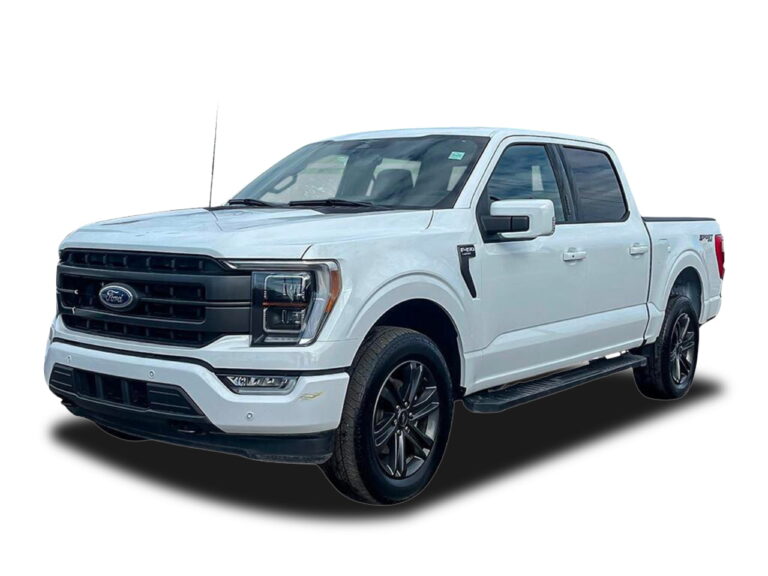Blue Book Value On Trucks: Your Definitive Guide to Truck Valuation
Blue Book Value On Trucks: Your Definitive Guide to Truck Valuation cars.truckstrend.com
In the vast landscape of automotive ownership, few vehicles command as much attention and utility as trucks. From hauling heavy loads to navigating rugged terrains, trucks are indispensable tools and cherished companions for millions. Whether you’re a buyer seeking a fair deal, a seller aiming to maximize your return, or an owner exploring financing or insurance options, understanding your truck’s "Blue Book Value" is paramount. It’s not just a number; it’s a critical benchmark that empowers informed decisions, ensuring you get the most out of your investment.
What Exactly is "Blue Book Value" for Trucks?
Blue Book Value On Trucks: Your Definitive Guide to Truck Valuation
When people refer to "Blue Book Value," they are primarily alluding to the valuations provided by Kelley Blue Book (KBB). KBB has been a trusted authority in vehicle valuation for nearly a century, offering a standardized method for estimating a vehicle’s worth based on a multitude of factors. For trucks, this "Blue Book Value" isn’t a single, fixed price but rather a range of values reflecting different sales scenarios – trade-in, private party, and retail.
While KBB is the most widely recognized, it’s important to note that other reputable valuation tools exist, such as NADA Guides (National Automobile Dealers Association) and Edmunds. Each platform employs proprietary algorithms, drawing data from millions of transactions, auction results, dealership sales, and current market trends. Together, these tools provide an industry benchmark, helping buyers and sellers establish realistic expectations and negotiate effectively. Think of it as the market’s collective wisdom distilled into a practical guide, reflecting what a specific truck, given its characteristics, is reasonably worth at a given time.
Why is Understanding Your Truck’s Blue Book Value Crucial?
Knowing your truck’s Blue Book Value is not merely academic; it has tangible financial implications across various scenarios:
- For Sellers: It provides a data-driven starting point for pricing your truck competitively. Overpricing leads to no interest, while underpricing means leaving money on the table. KBB values give you negotiation power, allowing you to justify your asking price with an industry-recognized standard.
- For Buyers: Armed with KBB values, you can quickly identify if a seller’s asking price is fair, inflated, or a potential steal. It prevents you from overpaying and helps you make a confident offer, ensuring you get good value for your money.
- For Financing/Loans: When applying for a loan to purchase a truck, lenders frequently consult KBB or NADA values to determine the maximum loan amount they are willing to offer. The Blue Book value serves as a key indicator of the collateral’s worth.
- For Insurance: In the unfortunate event of a total loss, your insurance company will use valuation guides like KBB to determine the actual cash value (ACV) of your truck, which dictates your payout. Understanding this value beforehand helps you ensure adequate coverage.
- For Trade-ins: If you’re trading in your old truck at a dealership for a new one, knowing its KBB trade-in value empowers you to assess the fairness of the dealer’s offer. This knowledge can save you thousands by preventing lowball offers.

Factors That Influence a Truck’s Blue Book Value
A truck’s Blue Book value is dynamic, fluctuating based on a complex interplay of various attributes. Understanding these factors is key to accurately assessing a vehicle’s worth:

- Make and Model: Certain brands (e.g., Ford F-Series, Chevrolet Silverado, Ram) consistently hold their value better due to strong reputation, reliability, and popularity. Specific models or trim levels within these brands also command different values.
- Year of Manufacture: Like all vehicles, trucks depreciate over time. Newer models generally have higher values, though some classic or highly sought-after older models can buck this trend.
- Mileage: This is one of the most significant depreciation factors. High mileage (above average for its age) indicates more wear and tear, reducing value. Conversely, exceptionally low mileage for its age can increase value.
- Condition (Interior, Exterior, Mechanical): KBB typically asks for a self-assessment:

- Excellent: Flawless, like new, perfectly maintained.
- Good: Minor imperfections, well-maintained, no major mechanical issues.
- Fair: Noticeable wear and tear, some mechanical issues, minor repairs needed.
- Poor: Significant cosmetic damage, major mechanical problems, extensive repairs needed.
Rust, dents, scratches, stained upholstery, and non-functioning features all detract from value.
- Engine Type & Drivetrain: Diesel engines often command a premium due to their durability and towing capacity, especially in heavy-duty trucks. Four-wheel-drive (4WD) or all-wheel-drive (AWD) trucks are generally more valuable than two-wheel-drive (2WD) versions, particularly in regions with harsh weather or off-road demand.
- Trim Level & Features: A higher trim level (e.g., Ford F-150 Platinum vs. XL) with luxury features, advanced technology (navigation, infotainment), and practical additions (tow package, bed liner, premium sound system, sunroof) will significantly increase value.
- Accident History & Title Status: A clean title (no prior accidents, floods, or salvage history) is crucial. Trucks with salvage, rebuilt, flood, or fire titles have drastically reduced values and can be difficult to insure or finance. A Vehicle History Report (like CarFax or AutoCheck) is essential.
- Geographic Location: Demand for certain truck types can vary by region. For example, 4WD trucks are more sought after in snowy climates, while rust can severely impact values in the "rust belt" states.
- Market Conditions: Economic factors, fuel prices, new vehicle inventory, and consumer trends can all influence demand and, consequently, Blue Book values. A surge in fuel prices might depress the value of large, less fuel-efficient trucks.
How to Find Your Truck’s Blue Book Value (Step-by-Step Guide)
Finding your truck’s Blue Book value is a straightforward process, primarily done through the Kelley Blue Book website:
- Visit KelleyBlueBook.com: Navigate to the main KBB website.
- Select "Get Your Car’s Value": You’ll typically find a prominent button or section for this.
- Enter Your Truck’s Information:
- Year, Make, Model: Accurately input these details.
- Style/Trim: This is crucial. Select the specific trim level (e.g., F-150 XLT, Silverado LTZ, Ram 1500 Laramie). If you’re unsure, look at your truck’s badging, owner’s manual, or VIN decoder.
- Input Mileage: Provide the current odometer reading. Be as precise as possible.
- Select Options and Features: KBB will present a list of common options for your truck’s trim. Select all that apply (e.g., 4WD, tow package, premium audio, specific engine size, bed length, cab style).
- Assess Condition Accurately: This is perhaps the most subjective but critical step. KBB provides detailed descriptions for "Excellent," "Good," "Fair," and "Poor" conditions. Be honest and realistic. If you’re selling, err on the side of slightly lower than you think to avoid disappointment. If buying, assume "Good" unless proven otherwise.
- Review the Values: KBB will then present various values:
- Trade-in Value: What a dealership is likely to offer you for your truck. This is usually the lowest value as dealers need to make a profit.
- Private Party Value: What you can expect to sell your truck for to an individual buyer. This is typically higher than trade-in as there’s no dealer markup.
- Retail Value: What you can expect to pay for the same truck if buying from a dealership. This is generally the highest value, reflecting the dealer’s reconditioning costs, warranty, and profit margin.
Remember to also cross-reference with other valuation sites like NADA Guides and Edmunds for a more comprehensive picture.
Maximizing Your Truck’s Blue Book Value
While some factors like age and mileage are immutable, you can significantly influence your truck’s value:
- Maintain Meticulous Service Records: A well-documented history of regular oil changes, tire rotations, and major services demonstrates care and reliability.
- Keep it Clean and Detailed: A thorough cleaning, inside and out, can dramatically improve perceived value. Address minor stains, vacuum carpets, and shine the exterior.
- Address Minor Repairs Promptly: Fix small dents, scratches, cracked taillights, or non-functioning interior lights. These inexpensive fixes can prevent a significant hit to value.
- Ensure Good Tire Condition: Tires with ample tread depth are a major selling point. If your tires are worn, consider replacing them if the cost is justified by the potential increase in value.
- Have All Keys and Manuals: Missing keys or the owner’s manual can be a minor annoyance that adds up in the buyer’s mind.
- Highlight Desirable Features: When listing your truck, emphasize sought-after options like a factory tow package, premium sound system, or advanced safety features.
Challenges and Nuances in Truck Valuation
Truck valuation can sometimes present unique challenges:
- Highly Customized Trucks: Aftermarket modifications like lift kits, oversized tires, custom bumpers, or performance upgrades often do not add to Blue Book value, and in some cases, can even detract from it, as they appeal to a niche market or raise concerns about reliability.
- Commercial vs. Personal Use: A truck used for heavy commercial work (e.g., construction, landscaping) may show more wear and tear, even with lower mileage, impacting its value compared to a personal-use truck.
- Specialty Trucks: Certain heavy-duty trucks, dually setups, or trucks with specific commercial upfits (like utility bodies or flatbeds) might have a more specialized market, and their values might be better assessed through commercial vehicle guides or specialized appraisers.
- The "Truck Boom" Effect: In periods of high demand for trucks, values can sometimes exceed typical Blue Book estimates, especially for popular models. Conversely, during economic downturns, values might dip.
Blue Book Value On Trucks: Example Price Table (Illustrative)
Please note: The values in this table are purely illustrative and do not reflect real-time market data. Actual values will vary based on exact specifications, current market conditions, and location.
| Truck Example (Make/Model/Year) | Mileage (Approx.) | Condition | KBB Trade-in Value (Est.) | KBB Private Party Value (Est.) | KBB Retail Value (Est.) | Key Features/Notes |
|---|---|---|---|---|---|---|
| Ford F-150 XLT (2019) | 75,000 miles | Good | $28,000 | $31,500 | $34,000 | Crew Cab, 4×4, 3.5L EcoBoost, Tow Pkg, Bedliner |
| Chevy Silverado 1500 LT (2017) | 120,000 miles | Fair | $18,500 | $21,000 | $23,500 | Double Cab, 2WD, 5.3L V8, Minor dents/scratches |
| Ram 1500 Laramie (2021) | 30,000 miles | Excellent | $45,000 | $49,000 | $52,000 | Quad Cab, 4×4, Hemi V8, Premium Leather, Nav |
| Toyota Tacoma SR5 (2018) | 60,000 miles | Good | $25,000 | $27,500 | $29,800 | Access Cab, 4×4, V6, Tow Pkg, Clean history |
| GMC Sierra 2500HD Denali (2020) | 40,000 miles | Excellent | $55,000 | $60,000 | $64,000 | Crew Cab, 4×4, Duramax Diesel, Luxury Pkg |
Frequently Asked Questions (FAQ) about Blue Book Value On Trucks
Q1: Is Kelley Blue Book the only "blue book" for trucks?
A1: While KBB is the most widely recognized and often synonymous with "Blue Book Value," other reputable valuation guides exist, such as NADA Guides (National Automobile Dealers Association) and Edmunds. Dealerships and financial institutions often use NADA as well. It’s wise to check multiple sources for a comprehensive view.
Q2: Does aftermarket equipment or modifications increase my truck’s Blue Book value?
A2: Generally, no. Most aftermarket modifications (lift kits, custom wheels, performance chips, specialized stereos) do not significantly increase the Blue Book value and can sometimes even decrease it, as they appeal to a specific buyer niche or raise concerns about reliability. Exceptions might include professionally installed, highly desirable commercial upfits that have broad utility.
Q3: How accurate is the Blue Book value?
A3: Blue Book values are highly accurate as a guide and starting point. They are based on vast amounts of data and market trends. However, the final selling price can vary based on your specific local market, the urgency of the sale, the buyer’s individual perception, and how well you negotiate. It’s a strong estimate, not a guaranteed price.
Q4: What’s the difference between trade-in value and private party value?
A4: Trade-in value is the amount a dealership is likely to offer you when you trade your truck in towards the purchase of another vehicle. This is usually the lowest value because the dealership needs to recondition the truck and sell it for a profit. Private party value is the estimated price you can expect to get when selling your truck directly to an individual buyer. This is typically higher than trade-in value as there’s no middleman.
Q5: Does rust affect Blue Book value significantly?
A5: Yes, rust can significantly affect a truck’s Blue Book value, especially structural rust on the frame or suspension components. It indicates neglected maintenance, potential safety issues, and can be very expensive to repair, deterring many buyers and lowering the assessed condition.
Q6: Can I get more than Blue Book value for my truck?
A6: It’s possible, but rare and depends heavily on market conditions and demand. If your truck is exceptionally clean, has very low mileage, is a highly sought-after model, or if there’s a strong local demand for your specific truck, you might achieve a price slightly above the private party Blue Book value. However, it’s not something to expect regularly.
Conclusion
Understanding your truck’s Blue Book value is an indispensable part of responsible truck ownership. It transforms what could be a speculative transaction into an informed decision, whether you’re buying, selling, financing, or insuring. While the "Blue Book" provides a robust framework for valuation, remember it’s a dynamic guide, not a rigid rule. Factors like your truck’s unique condition, features, and the ever-shifting market landscape will always play a role in its final worth. By leveraging this knowledge, maintaining your vehicle diligently, and being realistic in your expectations, you empower yourself to navigate the truck market with confidence, ensuring you always get a fair deal for your valuable asset.






